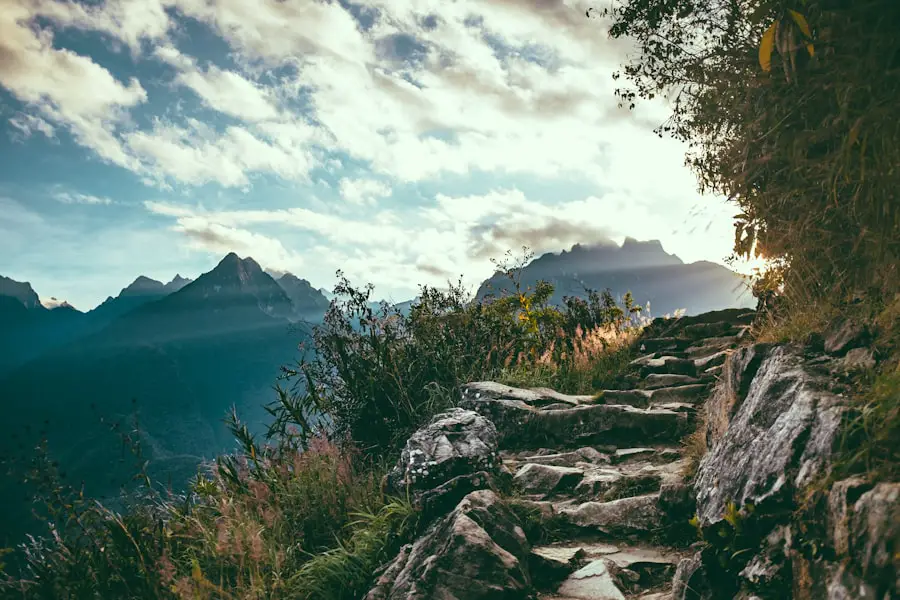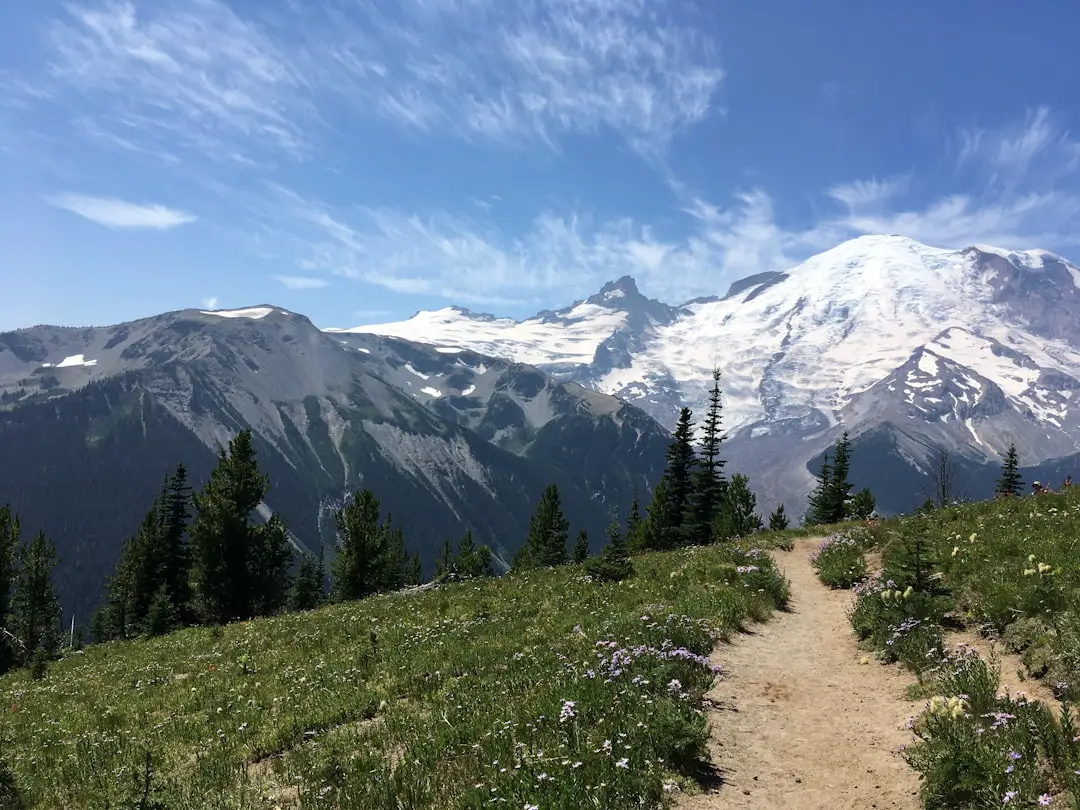Trekking and hiking are often used interchangeably, but they represent distinct activities with unique characteristics. Hiking typically refers to shorter, less strenuous walks on established trails, often in local parks or nature reserves. These trails can vary in difficulty, but they are generally accessible to a wide range of fitness levels.
Hikes can last anywhere from a couple of hours to a full day, making them suitable for families, casual walkers, and those looking for a quick escape into nature. The focus of hiking is often on enjoying the scenery, observing wildlife, and engaging in light physical activity. In contrast, trekking is usually associated with longer, multi-day journeys that often take place in remote or rugged terrains.
Treks can involve significant elevation changes, challenging weather conditions, and the need for self-sufficiency. Unlike hiking, which may allow for easy access to amenities like restrooms and water sources, trekking often requires participants to carry their supplies, including food, water, and camping gear. This level of commitment and preparation makes trekking a more demanding endeavor, appealing to those seeking adventure and a deeper connection with nature.
Key Takeaways
- Trekking involves multi-day, challenging hikes in remote areas, while hiking typically refers to shorter, less strenuous walks on established trails.
- Trekking requires a higher level of physical fitness and endurance compared to hiking, which can be suitable for a wider range of fitness levels.
- Essential gear for trekking includes a sturdy backpack, hiking boots, and camping equipment, while hiking may only require comfortable shoes and a daypack.
- Both trekking and hiking have an impact on the environment, and it’s important to follow Leave No Trace principles to minimize this impact.
- Safety considerations for both activities include proper preparation, knowledge of the area, and being aware of potential hazards such as wildlife and weather conditions.
Physical Demands and Fitness Levels
The physical demands of trekking and hiking can vary significantly based on the terrain, duration, and individual fitness levels. Hiking is generally more accessible for people of all ages and fitness backgrounds. Many hiking trails are designed to accommodate beginners, featuring well-maintained paths with gentle inclines.
This accessibility allows individuals to enjoy the outdoors without the need for extensive training or preparation.
Trekking, on the other hand, often requires a higher level of physical fitness and stamina.
Trekkers may find themselves navigating steep mountain passes, crossing rivers, or traversing uneven ground for several days at a time. This sustained physical exertion can be taxing on the body, necessitating a good cardiovascular base and muscular strength. Training for a trek might involve long-distance walking or running, strength training to build core and leg muscles, and practicing with a weighted backpack to simulate the conditions of the trek.
As such, individuals considering trekking should assess their fitness levels and prepare accordingly to ensure they can handle the rigors of the journey.
Equipment and Gear Needed

The equipment and gear required for trekking and hiking can differ significantly due to the nature of each activity. For hiking, the essentials typically include sturdy footwear such as hiking boots or trail shoes, comfortable clothing suitable for the weather conditions, a daypack for carrying water and snacks, and basic navigation tools like a map or GPS device. Depending on the length of the hike, additional items such as trekking poles, first aid kits, and extra layers may also be advisable. In contrast, trekking demands a more comprehensive array of gear due to its extended duration and potential exposure to harsh environments.
This includes a tent or sleeping bag for overnight stays, cooking equipment for meal preparation, and sufficient food and water supplies.
Clothing must be chosen carefully to provide insulation and protection against the elements; layering systems are often recommended to adapt to changing weather conditions. Additionally, trekkers may require specialized gear such as climbing equipment or navigation tools suited for remote areas. The investment in quality gear is crucial for ensuring safety and comfort during longer treks.
Environmental Impact and Conservation
| Metrics | Data |
|---|---|
| Carbon Emissions | 10,000 tons per year |
| Energy Consumption | 50,000 kWh per month |
| Water Usage | 1 million gallons per year |
| Recycling Rate | 75% of waste recycled |
Both trekking and hiking have environmental impacts that warrant consideration. Hiking trails can become eroded over time due to foot traffic, particularly in popular areas where large numbers of people congregate. This erosion can lead to habitat destruction and negatively affect local flora and fauna.
To mitigate these impacts, many parks implement measures such as trail maintenance and education programs aimed at promoting responsible hiking practices. Hikers are encouraged to stay on designated paths to minimize their footprint on the environment. Trekking often takes place in more fragile ecosystems where the potential for environmental degradation is even greater.
The impact of trekkers can be profound in remote areas where infrastructure is limited. Littering, wildlife disturbances, and overuse of certain trails can threaten biodiversity and disrupt local ecosystems. Conservation efforts in trekking regions may include establishing guidelines for waste disposal, limiting group sizes, and promoting Leave No Trace principles that encourage trekkers to minimize their impact on the environment.
Engaging with local communities in conservation efforts can also enhance the sustainability of trekking routes while providing economic benefits to those communities.
Safety Considerations
Safety is paramount in both trekking and hiking but is particularly critical in trekking due to the inherent risks associated with longer journeys in remote areas. Hikers should always be aware of their surroundings and prepared for sudden changes in weather conditions. Carrying a first aid kit is essential for addressing minor injuries or ailments that may arise during a hike.
Additionally, informing someone about your planned route and expected return time can provide an extra layer of safety. For trekkers, safety considerations become even more complex due to the extended duration away from civilization. Navigational skills are crucial; trekkers should be proficient in using maps and compasses or GPS devices to avoid getting lost in unfamiliar terrain.
Weather conditions can change rapidly in mountainous regions, so trekkers must be prepared for rain, snow, or extreme temperatures by carrying appropriate gear. It’s also vital to have contingency plans in case of emergencies, such as injury or equipment failure. Understanding the local wildlife and potential hazards—such as altitude sickness or river crossings—can further enhance safety during treks.
Mental and Emotional Benefits

Nature’s Tranquility and Improved Mood
Hiking offers an opportunity to disconnect from daily stressors and immerse oneself in nature’s tranquility. The rhythmic movement of walking combined with fresh air can lead to improved mood and reduced anxiety levels.
Boosting Resilience and Self-Esteem
Studies have shown that spending time in natural environments can lower cortisol levels—the hormone associated with stress—and promote feelings of happiness. Trekking amplifies these benefits by allowing individuals to experience nature more profoundly over extended periods. The challenges faced during a trek—whether physical exertion or navigating difficult terrain—can foster resilience and boost self-esteem as trekkers overcome obstacles.
Increased Confidence and Social Connections
The sense of accomplishment that comes from completing a multi-day trek can lead to increased confidence and a greater appreciation for one’s capabilities. Additionally, the camaraderie developed among fellow trekkers can enhance social connections and provide emotional support during challenging moments on the trail.
Popular Trekking and Hiking Destinations
There are countless destinations around the world that cater to both hikers and trekkers, each offering unique landscapes and experiences. In North America, national parks such as Yosemite in California or Banff in Canada provide stunning vistas along well-marked hiking trails suitable for all skill levels. The Appalachian Trail stretches over 2,190 miles from Georgia to Maine, attracting hikers seeking both short sections and long-distance challenges.
For trekkers looking for more adventurous routes, destinations like Nepal’s Annapurna Circuit or Peru’s Inca Trail offer breathtaking scenery combined with cultural experiences. The Annapurna Circuit takes trekkers through diverse landscapes ranging from lush subtropical forests to high-altitude deserts while providing glimpses into local villages and traditions. Similarly, the Inca Trail leads trekkers through ancient ruins en route to Machu Picchu, blending physical challenge with historical significance.
Choosing the Right Activity for You
When deciding between trekking and hiking, it’s essential to consider personal preferences, fitness levels, and desired experiences. If you’re new to outdoor activities or looking for a leisurely way to enjoy nature without extensive preparation, hiking may be the ideal choice. Local trails offer opportunities for exploration without the commitment required for longer treks.
Conversely, if you seek adventure and are willing to invest time in training and preparation, trekking could provide an enriching experience that deepens your connection with nature. Consider factors such as time availability, physical fitness goals, and interest in exploring remote areas when making your decision. Ultimately, both activities offer unique rewards that contribute positively to physical health and mental well-being; choosing one over the other depends on individual circumstances and aspirations in the great outdoors.
When discussing the difference between trekking and hiking, it’s important to consider the gear needed for each activity. For example, having a reliable water bottle is essential for staying hydrated during long treks or hikes. If you’re looking for portable water bottles for your upcoming adventures, check out this article on 5 Must-Have Portable Water Bottles for Your Spring 2025 Adventures. Additionally, having a durable hiking backpack is crucial for carrying all your essentials during multi-day treks. For recommendations on the best hiking backpacks, take a look at this article on Best Hiking Backpack for Multi-Day Trek. And don’t forget about the importance of comfortable and versatile traveler pants for your outdoor excursions. Check out this article on Traveler Pants for some great options to consider.
FAQs
What is trekking?
Trekking is a long and challenging journey, typically on foot, that involves walking through remote and rugged terrain for multiple days. It often includes overnight stays in tents or basic accommodations.
What is hiking?
Hiking is a leisurely walk or a day trip, usually on well-marked trails and paths, through natural landscapes such as forests, mountains, and valleys. It is typically completed within a day and does not involve overnight stays.
What are the main differences between trekking and hiking?
The main differences between trekking and hiking are the duration, difficulty, and the type of terrain. Trekking involves longer journeys, often lasting multiple days, and is more physically demanding as it often includes steep and rugged terrain. Hiking, on the other hand, is a shorter and less strenuous activity, usually completed within a day and on well-maintained trails.
What kind of equipment is needed for trekking and hiking?
For trekking, essential equipment includes sturdy hiking boots, a backpack, camping gear, and appropriate clothing for varying weather conditions. Hiking requires similar equipment, but the gear may be lighter and less extensive due to the shorter duration and less challenging terrain.
What are some popular trekking destinations?
Popular trekking destinations include the Himalayas in Nepal, the Inca Trail in Peru, the Appalachian Trail in the United States, and the Camino de Santiago in Spain.
What are some popular hiking trails?
Popular hiking trails include the Pacific Crest Trail in the United States, the West Highland Way in Scotland, the Cinque Terre in Italy, and the Overland Track in Australia.
